The Independent's journalism is supported by our readers. When you purchase through links on our site, we may earn commission. Why trust us?
8 best tough cameras
We found the rugged snappers that will survive the elements
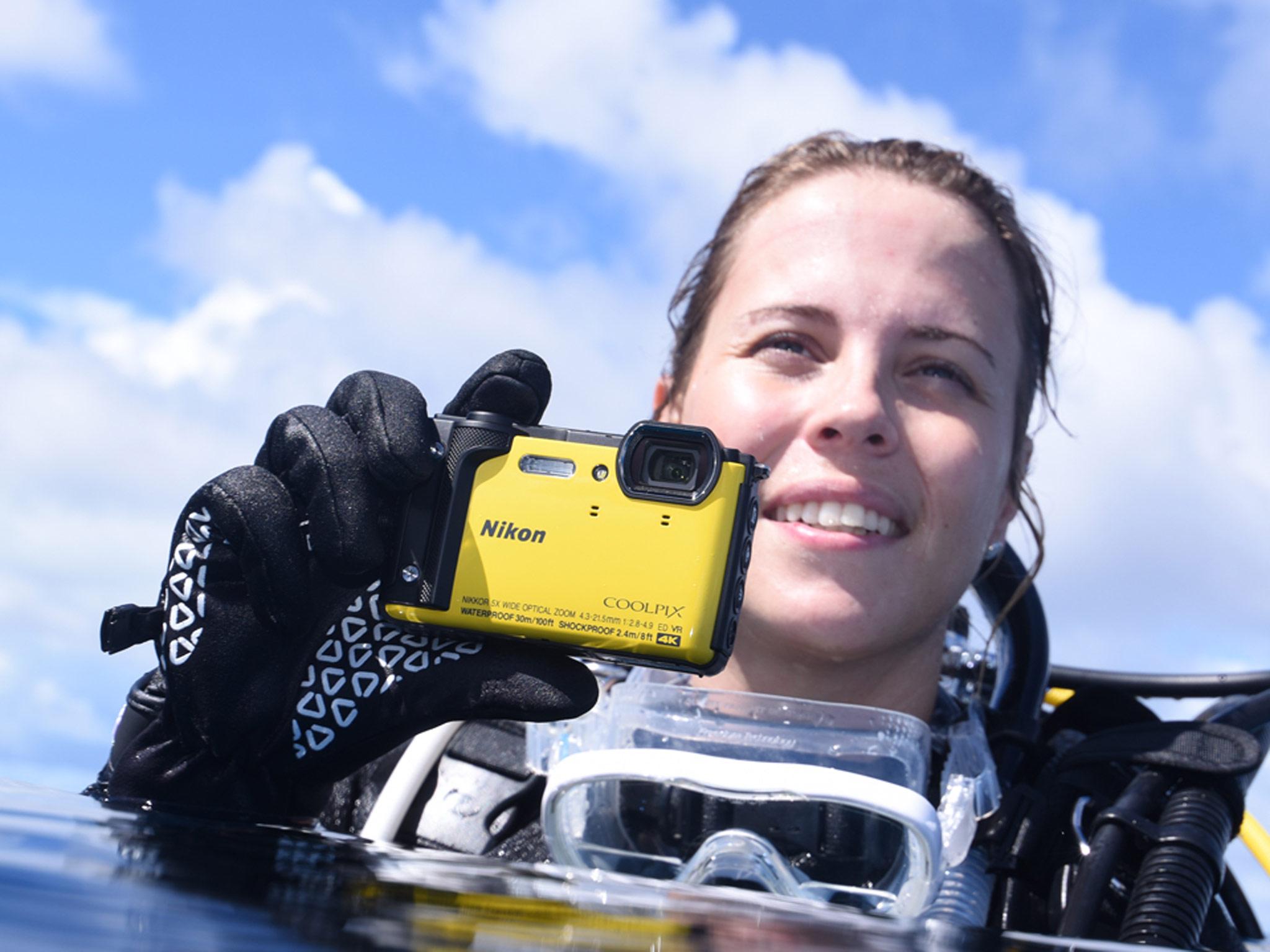
Why would you want a rugged camera? They’re not just for the clumsy, though that’s certainly one reason to choose one. Many are water-, sand-, dust- and freeze-proof so they’re great for taking on holiday if you’re planning a beach holiday, going skiing or doing something outdoorsy.
Some people find they want a camera that isn’t just silver, or black. It’s certainly easier to find a brightly coloured camera among the ruggedised snapper category than among DSLRs or premium compacts, not least because you want to be able to find it easily, even if you dropped it as you were getting off the ski lift.
And there are benefits to having a dedicated camera for sports instead of relying on your probably-more-delicate smartphone: drop that and you’ve lost much more than the ability to take photos.
Pretty much all rugged cameras are compacts, so they’ll fit easily into your pocket or hang from your wrist. They are distinct from action cameras like a GoPro, because they are fully functional stills cameras where action cams lean towards shooting video from complex mounts, and often lack viewfinders or screens.
Because the cameras we’ve listed feature optical zooms, there’s much more flexibility than with most camera phones. Look for 3x optical zoom or more. A 25-100mm lens offers 4x zoom, as you might expect from the maths. The smaller the mm, the more wide-angle the effect, and the higher the number, the more telephoto. In other words, as you zoom in, the lens switches to the higher end of its capabilities. A higher zoom means you can get closer to the action, handy for sport or wildlife, say. (Digital zoom is different from optical zoom, by the way. In fact, all that happens when you zoom in digitally instead of optically is that you crop to the centre of the image. This means you’re creating an image with far fewer pixels and therefore a much less impressive result. Digital zoom = bad, optical zoom = good.)
The more wide-open the lens, the more light gets in, so you can avoid camera shake or issues in low light. The smaller the “f” number, the bigger the aperture, so f/2 is more open than f/8, for instance. If shooting with a higher “f” number (a smaller aperture, that is), you will have a greater amount of the photo in sharp focus – which may or may not be what you want.
Aside from the obvious rugged qualities, cameras were tested for ease of use and speed of response, both in terms of how long it took to turn on and how quickly the trigger fired the sensor to avoid the dreaded shutter lag. Photos were taken in different conditions to check response to light and adverse weather conditions. Only the ones that performed consistently well in this regard were included in our round-up.
Shots were taken on a full battery to see how long the camera would last.
Olympus Tough TG-5: £349.99, Amazon
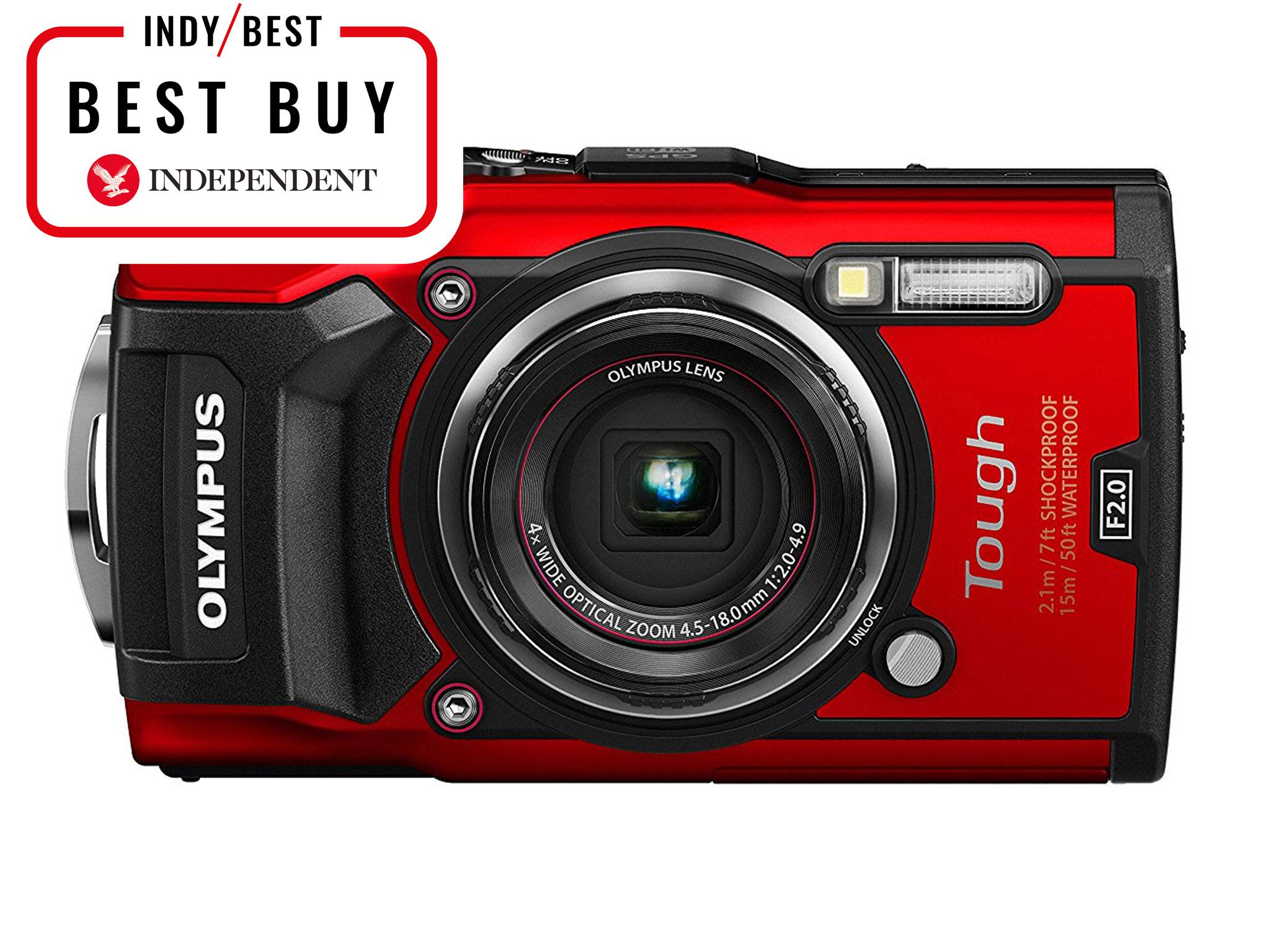
Waterproof: 15m
Freezeproof: -10C
Shockproof: 2.1m
Crushproof: 100kg
Dustproof: Yes
Lens size: 25-100mm
Lens aperture: f/2-4.9
This camera feels more solid and tough than some here – it’s tough enough to survive a drop from above shoulder height. It has a 12-megapixel sensor and an image processor (TruePic VIII), which was designed for a much more expensive Olympus camera, so no wonder it’s fast and effective, with especially good autofocus. It shoots video at the highest available resolution (4K) and image quality is best on test both for stills and moving pictures. The design lets enthusiasts attach converters and accessories to the lens for greater versatility. There are plenty of features for extra control, such as macro settings that let you get as close as 1cm in Microscope mode, and a Pro capture setting, which starts shooting before you press the shutter so you don’t miss that dolphin diving. The auto settings are very well tuned, too. It’s a good size in the hand and though there are sophisticated controls, it’s reasonably easy to use even on the move. Battery life is claimed as 340 shots – how long this lasts varies according to settings and how many pics you take. Realistically, you should have a full day’s shots ahead of you. Choose from red or black.
Panasonic Lumix DMC-FT30: £129, Currys
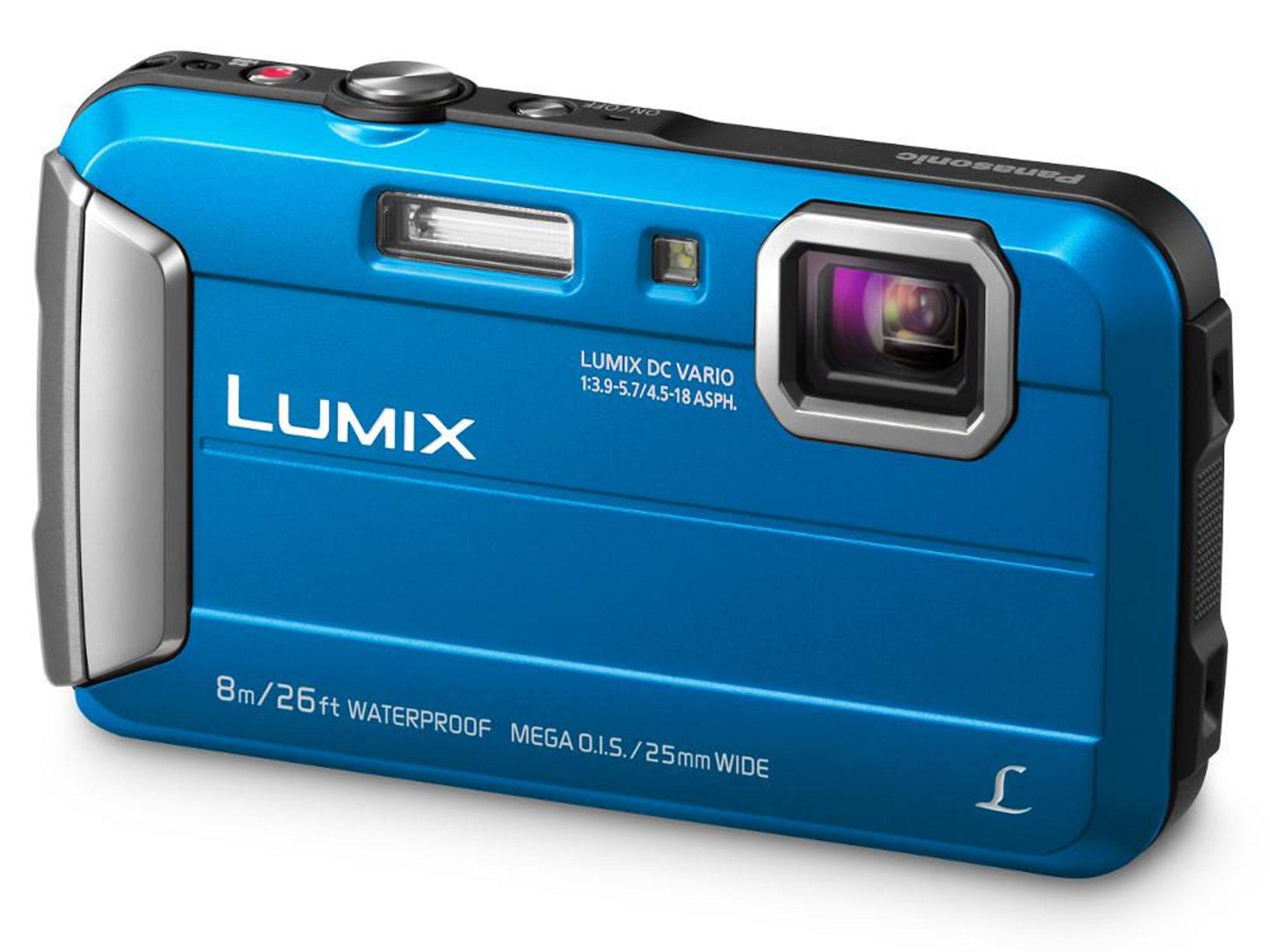
Waterproof: 8m
Freezeproof: -10C
Shockproof: 1.5m
Crushproof: No
Dustproof: Yes
Lens size: 25-100mm
Lens aperture: f/2.0-13
The 16-megapixel DMC-FT30 has a 4x optical zoom lens. It feels sturdy and reassuringly well-made but as Panasonic’s cameras routinely boast great build quality, this is no surprise. It’s not as strong as some rivals for video, shooting HD at only 720P resolution, which looks good until you compare it with higher-resolution footage. But it has advanced optical image stabilisation to guard against the blurring from camera shake. You can take it underwater to a depth of 8m, less than some here, and Panasonic says it’s only drop-proof for up to 1.5m. There’s significant versatility in how you shoot, including effects such as sepia, soft skin, night portrait, black and white and even one called “Happy”, giving a greater colour brightness and vividness. It has a built-in memory of 220MB – enough for a hundred photos or more – which is useful if you find you’ve filled up your memory card faster than you expected. You can also set the flash to stay on, so you can use the camera as a torch. Battery life is claimed as 250 shots, though we didn’t feel we were short-changed by the performance, lasting more than half a day of intensive testing. Choose from orange, blue, red and black – all of which are especially easy to find if you drop them in the snow or sand.
Nikon Coolpix W300: £389, John Lewis
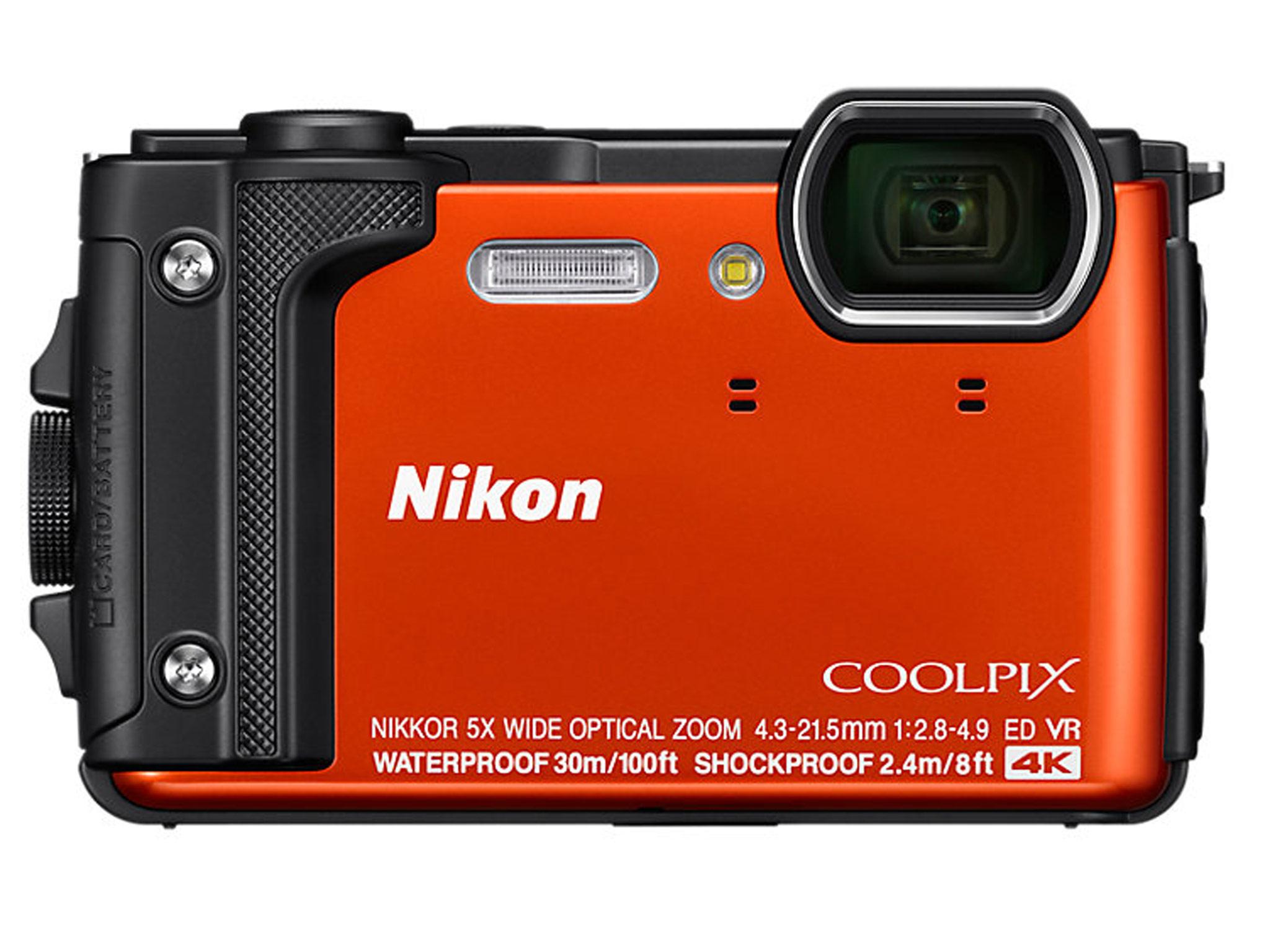
Waterproof: 30m
Freezeproof: -10C
Shockproof: 2.4m
Crushproof: No
Dustproof: Yes
Lens size: 4.3-21.5mm
Lens aperture: 3 steps (f/2.8, f/4.1, f/8.2)
The latest tech is on board this Nikon toughie, including 4K UHD video and Bluetooth to make it easy to transfer your shots to a smartphone, say. GPS means geotagging your shots is a breeze. This camera looks great, perhaps the best-looking of the lot, and is extremely easy to use, just like you would a regular point-and-shoot compact. Build quality is great, too. The 5x optical zoom and 16-megapixel sensor are common to this kind of camera, but definitely useful and effective. There’s also Dynamic Fine Zoom, which is just a combination of optical and digital zoom. It’s well-handled but optical on its own is still better. And there are neat touches, like a button that will display a compass, altitude or depth and more. That depth, by the way, is impressive: down to 30m. Buttons aren’t much bigger than on regular cameras but are still functional and feel good to use. It comes in a russet orange colour, though there’s also a camouflage option which is useful for birdwatching, say (but don’t blame us if you can’t find it when you drop it). Battery life is claimed at 280 shots, less than some here, but still a decent stretch, towards a full day of average use.
Fujifilm FinePix XP130: £199.99, Argos
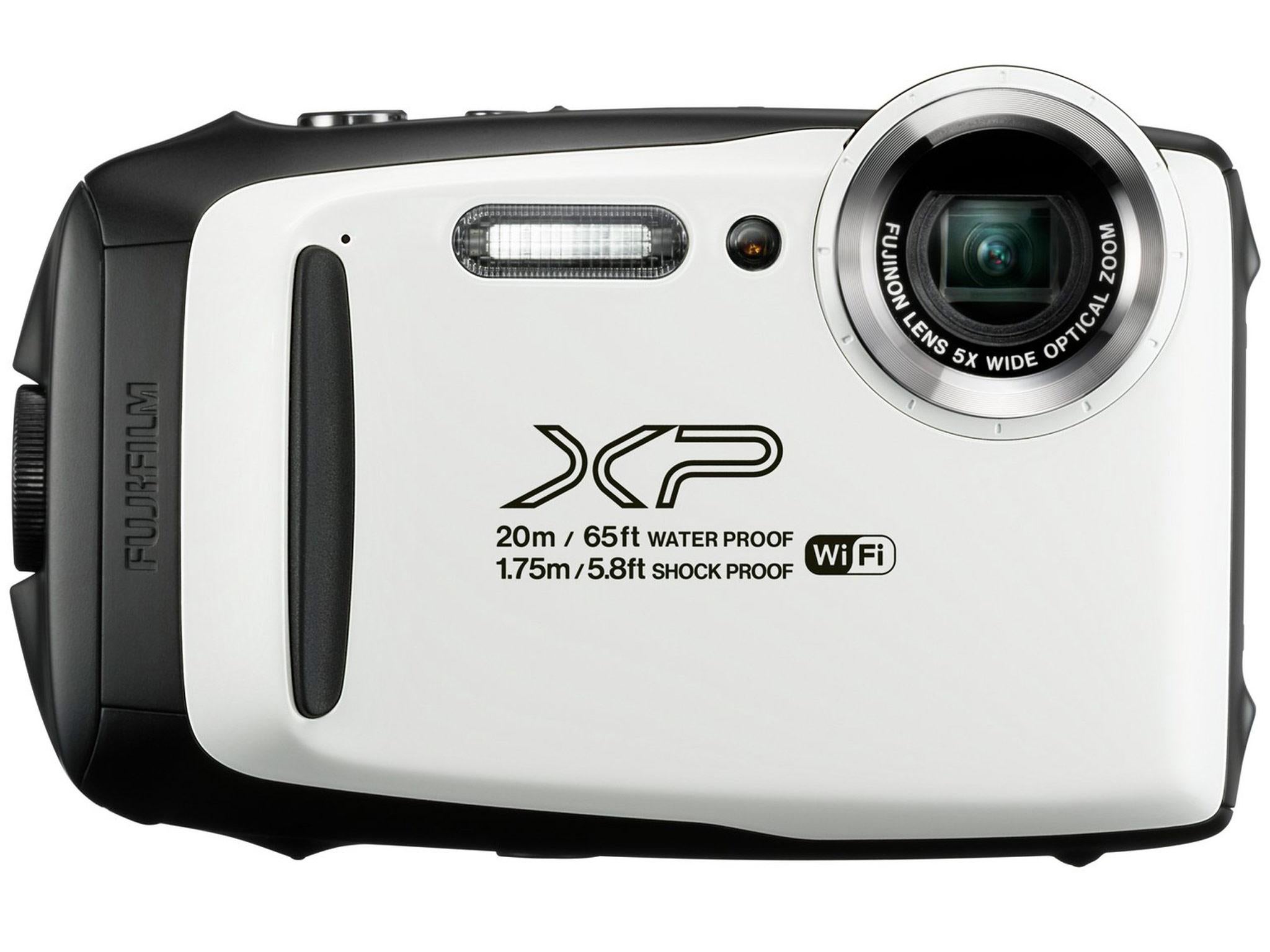
Waterproof: 20m
Freezeproof: -10C
Shockproof: 1.75m
Crushproof: No
Dustproof: Yes
Lens size: 28-140mm
Lens aperture: f/3.9-6.2 (wide), f/4.9-8.0 (telephoto)
This is the successor to the XP120 below and many elements remain the same, such as the overall design, 16.4-megapixel sensor and 5x optical zoom. But it’ll let you dive deeper (to a depth of 20m), which may be useful. Other improvements include Bluetooth to allow you to transfer images to a smartphone, say, and an electronic level so you can get the level horizon you seek. Video recording is at Full HD, at up to 60fps, which is faster than many, but lacks the 4K-resolution video of some cameras here. The 240-shot battery life claimed is not as much as some here but doesn’t feel stingy.
Fujifilm FinePix XP120: £128.99, Jessops
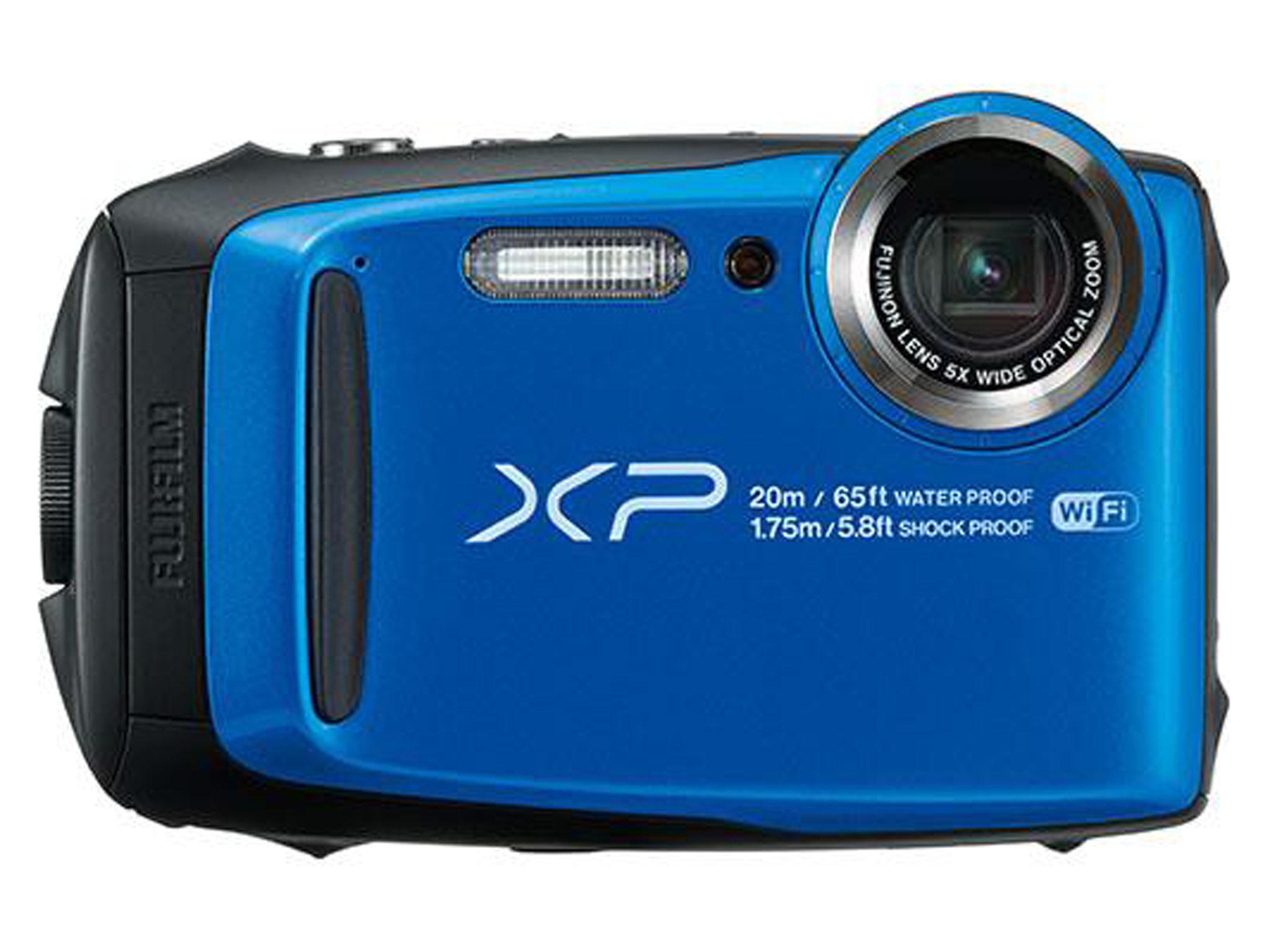
Waterproof: 15m
Freezeproof: -10C
Shockproof: 1.75m
Crushproof: No
Dustproof: Yes
Lens size: 28-140mm
Lens aperture: f/3.9-6.2 (wide), f/4.9-8.0 (telephoto)
The XP120 has been around a bit longer, so it’s great value, even if it doesn’t match the quality of some cameras here. The 16.4-megapixel sensor is decent enough, and the big buttons, including the zoom control, are well laid-out, so easy to operate through ski gloves or underwater. It’ll swim with you to a depth of 15m and the 3in display on the back is bright and sharp. Fujifilm claims it’ll survive a drop from 1.75m and it seems pretty solid, if a little plasticky. There’s a lock system that prevents the battery compartment opening by accident. The optical zoom goes to 5x, or 10x with digital assistance, but optical zoom is preferable, of course. Choose from blue, sky blue, lime or an eye-popping citrus yellow. It shoots video at Full HD resolution, like the XP130 that succeeded it. Battery life is clocked at 210 shots, so less than some here but for many users will be enough. A spare battery isn’t a bad idea, mind.
Nikon Coolpix W100: £129, Jessops
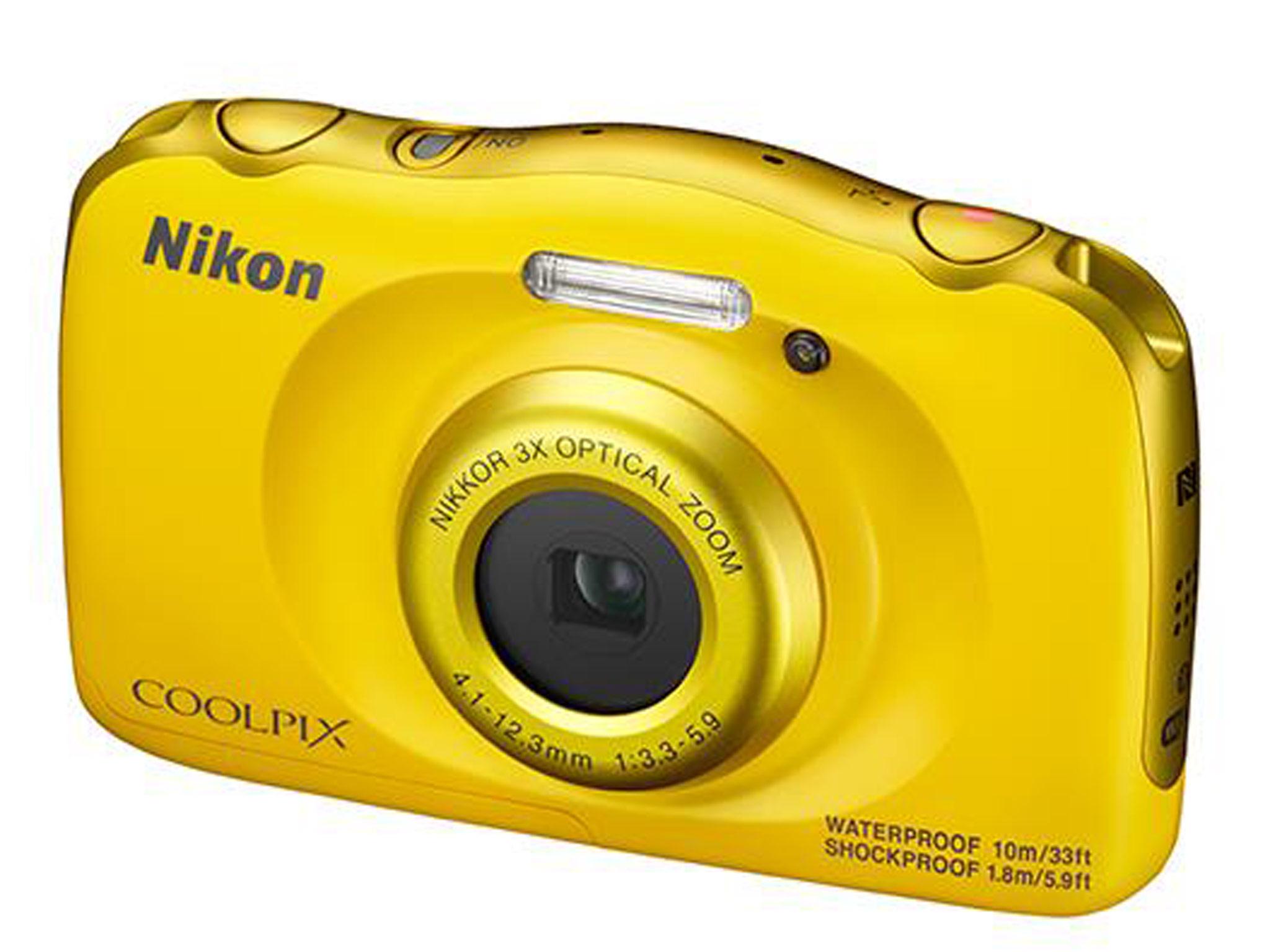
Waterproof: 10m
Freezeproof: -10C
Shockproof: 1.8m
Crushproof: No
Dustproof: Yes
Lens size: 30-90mm
Lens aperture: f/3.3-5.9
The W100 looks decidedly funky, and comes in the bright colours associated with ruggedised cameras: choose from blue, yellow or pink. The curvy edges fit well in the hand and reinforce the idea that this 13.2-megapixel model is aimed at fun though picture quality is still good. Its tough capabilities include waterproofing to a depth of 10m, and the first time you turn it on, a useful tutorial runs you through how to be sure your camera’s innards stay dry, for instance, and the two steps required to unlock the battery compartment. The emphasis is on simplicity, making shooting in challenging situations easier because you can just point the camera and let it do all the hard work. Even so, you can add frames to your shots, change scene settings to suit available lighting and choose between functions such as turning on close-up or underwater modes. Note that the rear screen is lower-resolution than most here (230,000 pixels across the 2.7in display compared to 460,000 pixels on the Olympus Tough TG-5’s display), which partly explains the lower price. As with the W300, the Dynamic Fine Zoom is a digital zoom which works with optical zoom to work out the shot and, again, generally optical zoom only is best. Video quality is good, full HD, but only at 30 fps. Optical zoom is not available when you’re shooting video. Battery life is less than many here. Nikon promises 220 shots and that feels about right, so if you go crazy you could be out of battery in just a few hours.
Polaroid IE090: £59.99, Argos
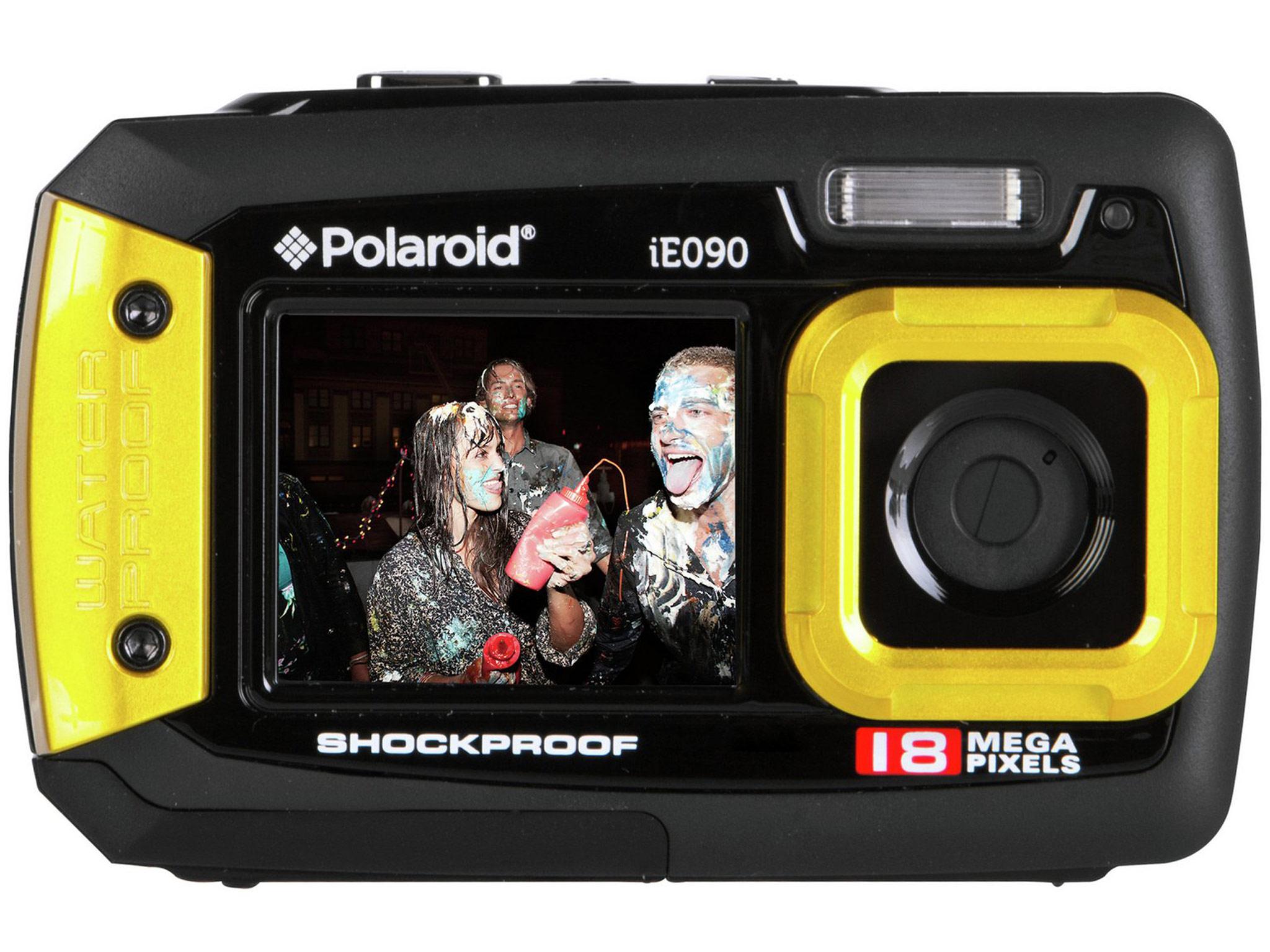
Waterproof: 3m
Freezeproof: No
Shockproof: 1.5m
Crushproof: No
Dustproof: Yes
Lens size: 62mm
Lens aperture: Not stated
The 18-megapixel Polaroid is very keenly priced. As a result, it’s no surprise that it’s only protected against water to a depth of 3m, and a smaller LCD screen than some. It also has no optical zoom, only a 4x digital zoom – digital zoom merely crops the edges of the existing image while optical zoom maintains full resolution when you zoom in so quality quickly palls. It shoots video at HD 720p (not Full HD) which looks good but not outstanding. But it has one standout feature: a small (1.8in) screen on the front means it’s ideal for framing self-portraits. In other words, this is a budget camera at a budget price but it works well and does a reasonable job. This is a fun camera for playing in the rain, or poolside, with the kids, rather than full-on photography. Available in red, blue or yellow.
Olympus Tough TG-Tracker: From £199, Park Cameras
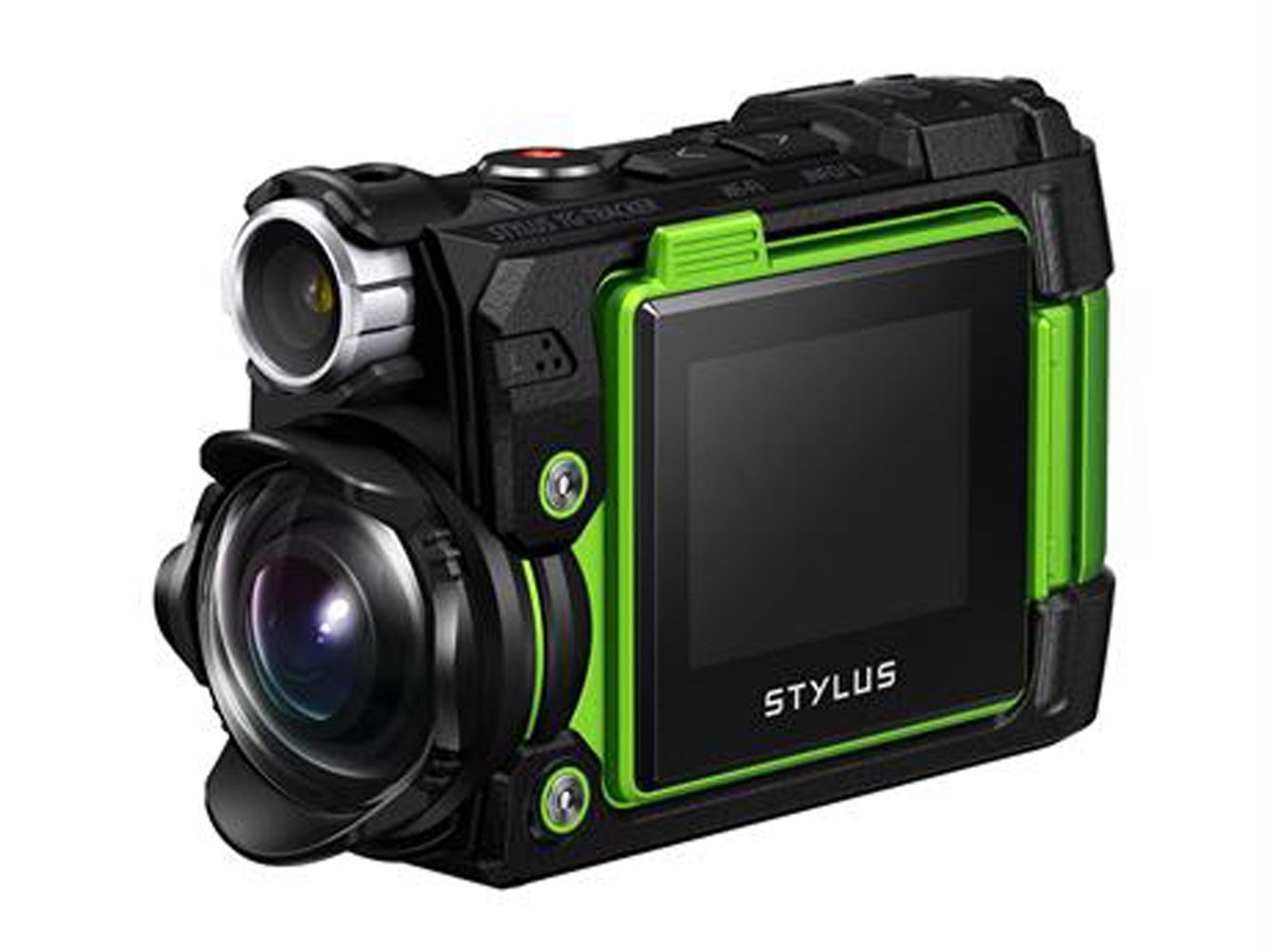
Waterproof: 30m
Freezeproof: -10C
Shockproof: 2.1m
Crushproof: 100kg
Dustproof: Yes
Lens size: 14mm
Lens aperture: f/2
This 7.2-megpixel camera is on the cusp of being an action camera, thanks to its ultra-wide angle lens (204 degrees) and its styling which is more like a diddy camcorder. It’s shock-proof to survive a drop of up to 2.1m, crushproof unless you put a weight of more than 100kg on it and can survive in water down to 30m. It’s cleverly built so that its internals are well-protected. Its video recording is at 4K resolution and the image processor comes from higher-end Olympus cameras. It’s fun to use and is an easily manageable size and weight. There are fun extras like GPS, so it can track where you are shooting, even including measuring temperature, if you must. The video quality when shooting at 4K is exceptional, even underwater, and battery life is enough to shoot for an hour at this resolution and still have juice left.
The verdict: tough cameras
If you’re looking for a ruggedised camera, you don’t want to give up on picture quality. The best balance of these elements is in the Olympus Tough TG-5, which looks smart and takes great shots. But you can also find something highly usable and much cheaper if you go for the simple and colourful Nikon Coolpix W100 or the excellent Panasonic Lumix DMC-FT30.